
Shrubs Around Las Vegas, Vegetation Around Las Vegas
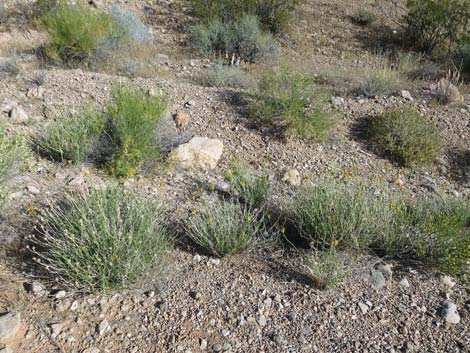 |
General: Cooper's Dogweed (Adenophyllum cooperi) is a low growing, subshrub with short, upright stems, yellow flowers, and spiky leaves. The leaves and phyllaries have oil glands. The plant is generally inconspicuous on the landscape, but when brushed or stepped on, it releases a pungent odor. Cooper's Dogweed is a fairly component of vegetation communities on well-drained sandy, gravelly, and rocky soils in washes and on upper bajadas and moderate slopes into the lower mountains in the Lower Sonoran (Creosote-Bursage Flats) and Upper Sonoran (Mojave Desert Scrub and Pinyon-Juniper Woodland) life zones. Family: Sunflower (Asteraceae). Other Names: Plant Form: Low-growing, mounded subshrub. Height: To about 18 inches, usually lower. Bark: Smooth, green. |
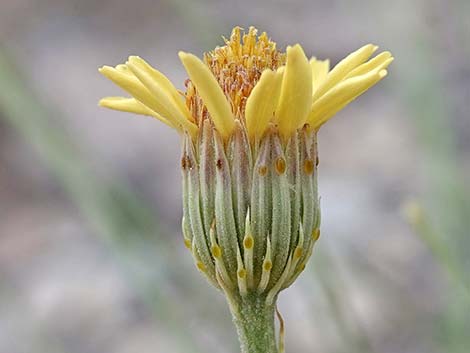 Phyllaries overlap, linear, each with a gland |
Stems: Upright, branching Leaves: Alternate, sessile, stiff, to about 1 inch long. Oblanceolate with lobes. Lobes with spines. Base of leaf with two glands, one more at the tip. Flowers: Blooms in spring. Inflorescence: flowerhead with disk and ray flowers. Phyllaries overlap, linear, each with a gland. Ray flowers 7 to 13, about 1/3 inch long, yellow to red-orange. Ray flowers often look narrower than might be expected. Disk flowers many; yellow. Seeds: Achene. Habitat: Dry, well-drained sandy, gravelly, and rocky soils on upper bajadas and moderate slopes in the lower mountains. Elevation: About 2,000 to 5,000 ft. Distribution: Southern California to northwestern Arizona. Comments: Very stinky plant. |
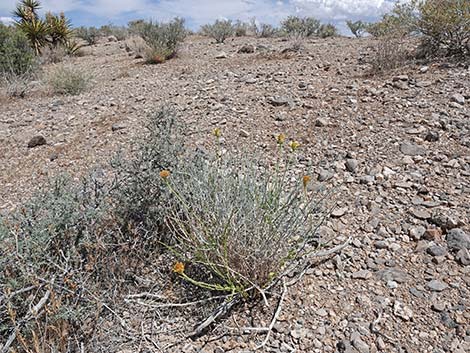 |
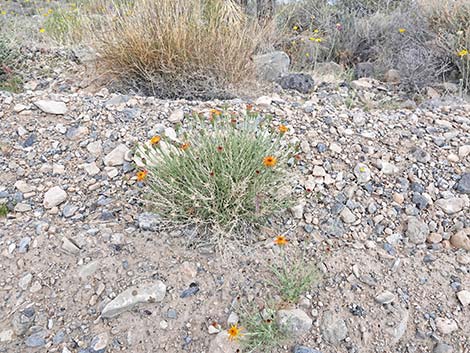 |
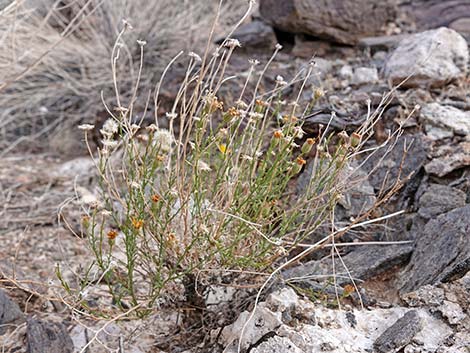 |
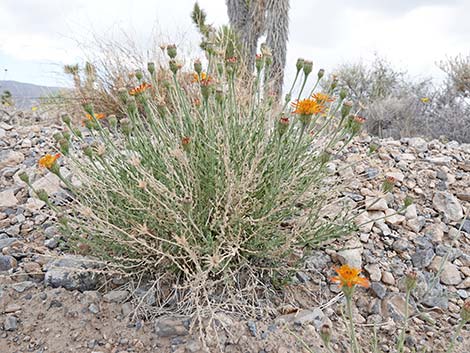 |
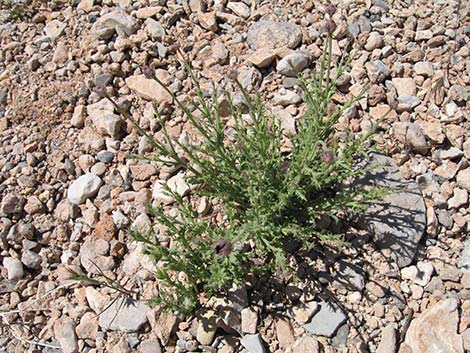 Fresh leaves in the spring |
 Flowerheads tend to persist on summer-dried plants |
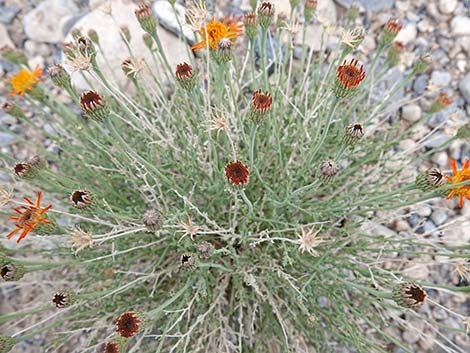 |
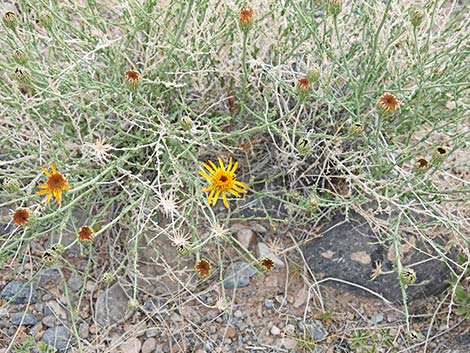 |
 |
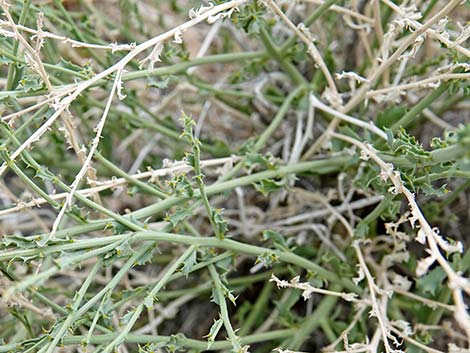 |
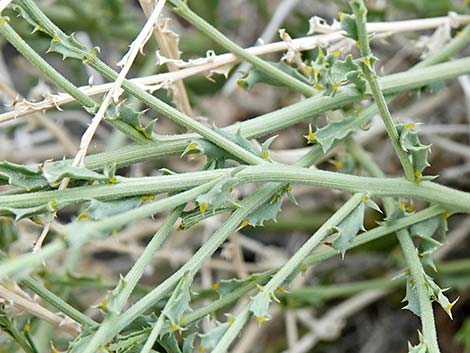 |
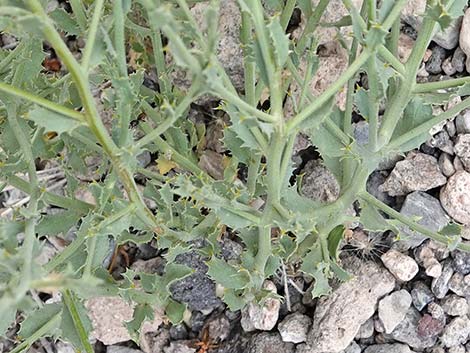 |
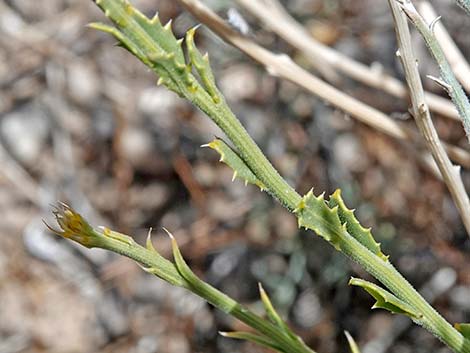 Lower leaves with prominent spines |
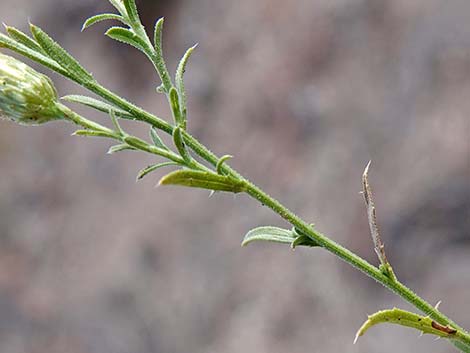 Upper leaves with reduced spines |
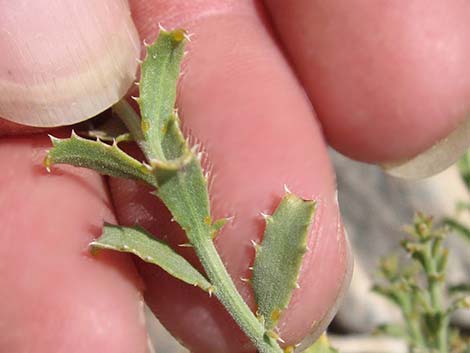 Leaves: lobed with spines |
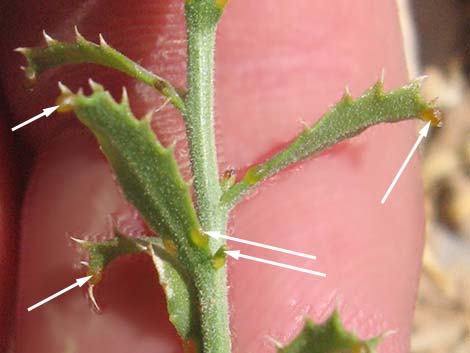 Glands on leaves |
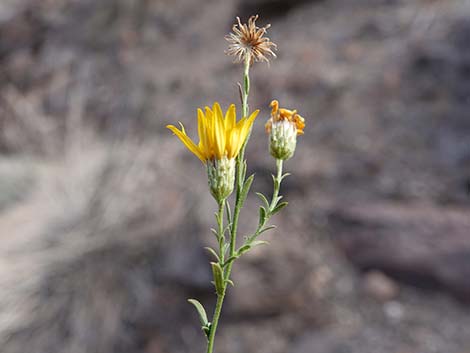 |
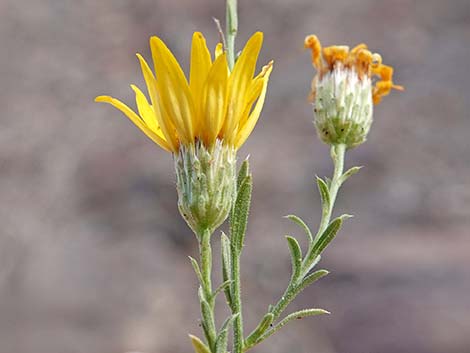 |
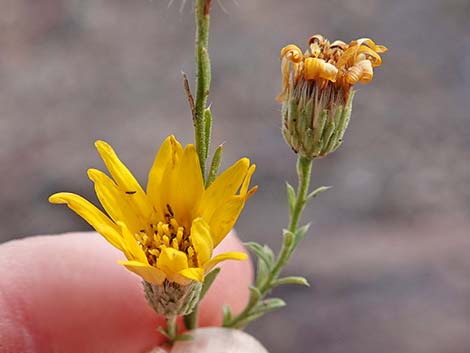 Aging flowers |
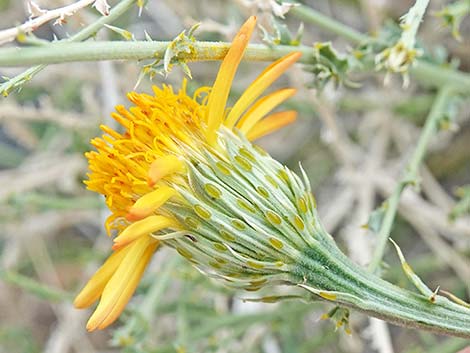 Phyllaries with glands |
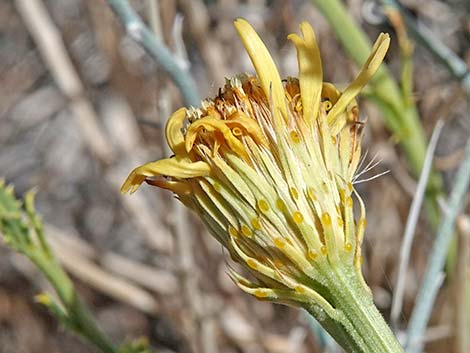 Phyllaries with glands |
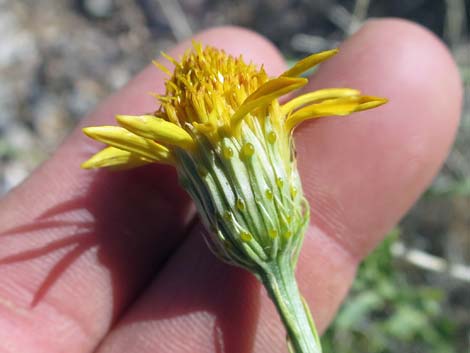 Phyllaries with glands |
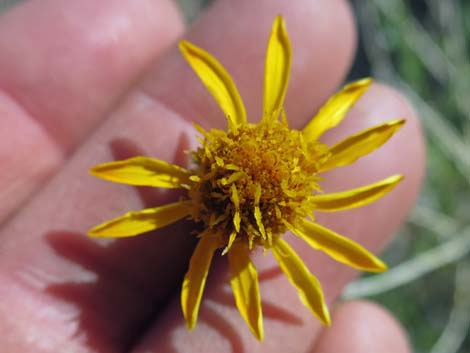 Flower yellow |
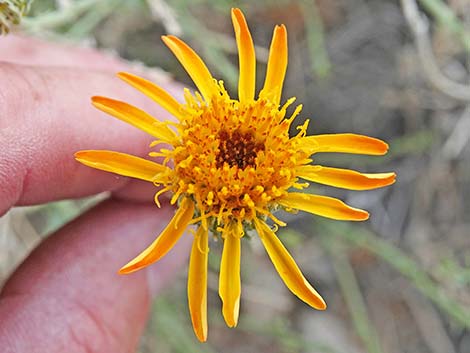 Flower yellow-orange, often narrower than expected |
 Aging flower |
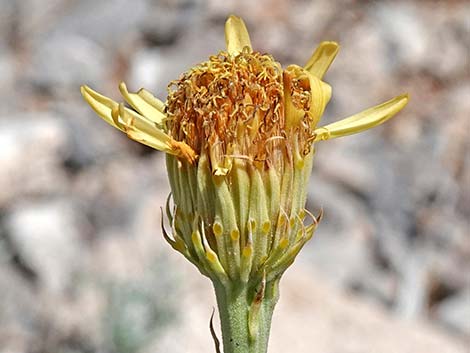 Aging flower |
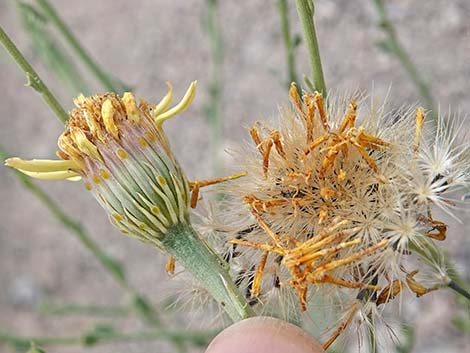 Aging flower and developing seeds |
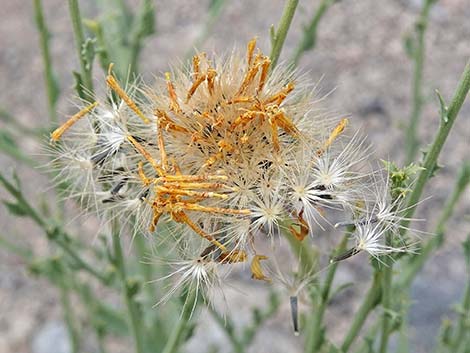 Developing seeds |
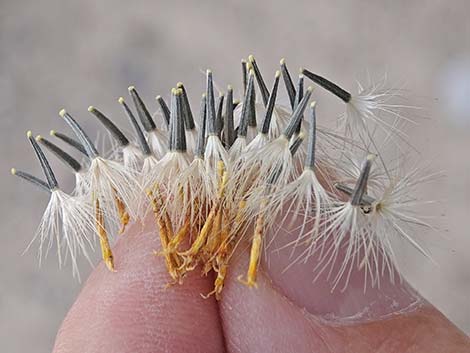 Ripe seeds |
 Ripe seeds |
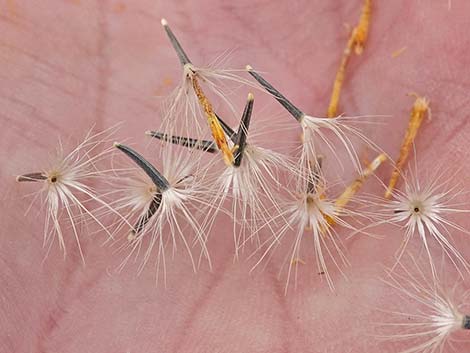 Ripe seeds |
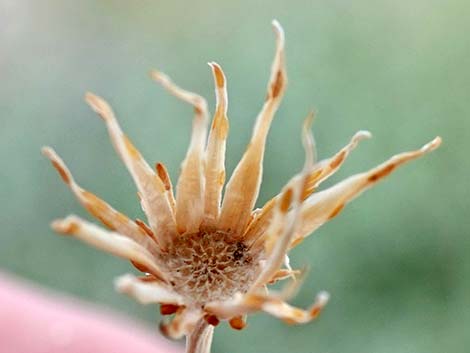 Receptacle and phyllaries persist into the winter |
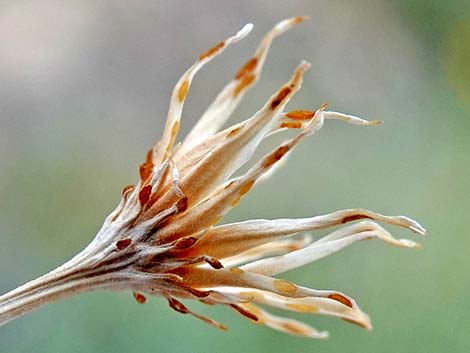 Glands remain obvious on old flowerhead |
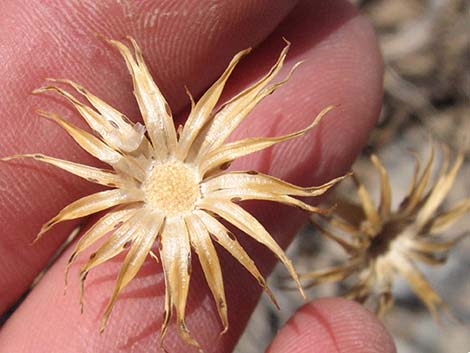 Old flowerheads tend to persist |
Note: All distances, elevations, and other facts are approximate. Names generally follow the USDA database.
![]() ; Last updated 240912
; Last updated 240912
| All Shrubs | Plant Species Index | Glossary | Copyright, Conditions, Disclaimer | Home |